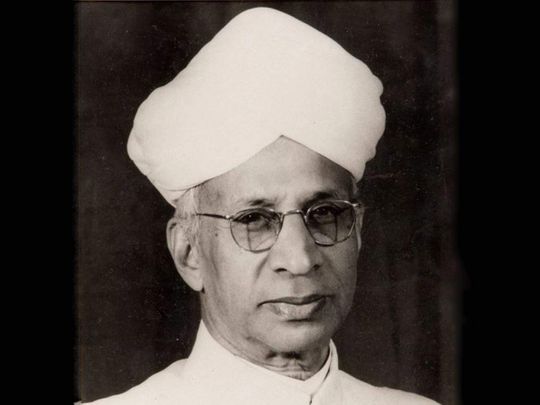
Traditionally, Indians regard Guru Purnima as the day to remember and show gratitude to their teachers. It is falls on the moon in the month of Ashadha (June-July). Also called Vyasa Purnima in memory of Krishna Dvaipayana, the author of the Mahabharata.
It is named after him because, as the compiler of the Vedas, he came to be known as Veda Vyasa since vyasa literally means one who collects, assembles, and arranges. The Buddhists venerate the Buddha on this day while many Hindus offer obeisance to Shiva, believed to be the Adi or first teacher.
In recent times, it was Mahatma Gandhi who revived the practice of observing Guru Purnima to pay his respects to one of his teachers, the Hindu-turned-Jain reformer, philosopher, and mystic Shrimad Rajchandra. But after independence, India as a secular republic, did not officially mark Guru Purnima, nor did it have a national teachers’ day till 1962. Let us take a look at how this came to pass.
India’s second president, Dr Sarvepalli Radhakrishnan, was a world-renowned teacher, philosopher, author, and statesman. Born in Tirutanni in 1888, he was a brilliant student, who went on to complete his MA in Philosophy from Madras Christian College in 1909.
Betterment of education in India
He then taught at Presidency College, Madras, University of Mysore, Calcutta, University, and Manchester College, before being invited as the Spalding Professor of Eastern Religion and Ethics at University of Oxford (1936-1952). He was the first Indian, in fact, Asian to hold a chair at Oxford.
Radhakrishnan was knighted by the British Empire in 1931 and awarded the highest civilian honour in India, the Bharat Ratna in 1954. After independence, he first served as India’s representative at Unesco, India’s first ambassador to Russia, and as member of the Constituent Assembly.
In 1952, he became India’s first Vice-President, a position he occupied for ten years. In May 1962, he was elected to the highest office of the land, becoming India’s second President.
For years previously, his students had celebrated his birthday. After he became President, he reportedly remarked that he would be happier if his birthday, instead of being a personal celebration, could be observed as Teachers’ Day in honour of all the teachers of India. At the request of the National Federation of Teachers, that is precisely what the Indian government did.
Always passionate about his vocation, he held “teachers should be the best minds in the country.” I am proud to say that it was President Radhakrishnan who founded the Indian Institute of Advanced Study in Shimla, whose Director I was till recently.
#LearningNeverStops
Three decades later, in 1994 the world followed India by declaring 5 October as World Teachers’ Day. This day memorialises the Unesco and ILO recommendations on the rights and responsibilities of teachers. In the slogan #LearningNeverStops, the UN acknowledged the role of teachers in ensuring that no learner is left behind. In Covid-19 times, teachers continued to inspire and support students, through the virtual mode, despite the lockdown.
This year, one of my most hardworking PhD students, who is also specially enabled, cleared his viva-voce on 3 September, the working day which was notified as Teachers’ Day in India since 5 September was a Sunday. That was the best affirmation and gift that I would have got for over forty years in this noble profession. In addition, of course, to the customary greetings from some former students and colleagues.
On my part, I spent early Sunday morning in the presence of a Jain Acharya, Muni Ananda Sagar, also known as “Mouni Priya,” or one who enjoys silence. Jains belong to one of India’s oldest, continuously practised religious and spiritual traditions.
They are totally non-violent, avoiding injury even to the smallest of creatures. Their Acharyas are the highest and most well-regarded of their preceptors.
Wisdom of the sages
Jain Munis follow the toughest regimen of any holy men that I know. Muni Anand Sagar, who belongs to the Digambar (or sky-clad) order, wears no clothes, eats and drinks water only once a day, maintains perfect chastity, even plucks out his hair instead of shaving, which is considered violence. He is a poet, scholar, speaker, in addition to being a deeply compassionate, witty, erudite, and practical man.
A quick and infallible judge of character, he never forgets a name or face or date. He can tell you on exactly which day and date you visited him last, even it is a couple of years back. After greeting me, he spoke to his small audience about the importance of Teachers’ Day.
“In this country, we distinguish between two kinds of teachers, the worldly and the spiritual, just as we believe knowledge is of two kinds, practical and transcendental.”
Looking at me, he said, “Book learning is not sufficient when it comes to knowing the nature of reality. Suppose a child has slipped into a river and is being washed away. Will you open a text book on hydraulics or try to ascertain the speed of the current?
Or will you jump in immediately to save the child? Our mundane life is similar. We are being swept away by its current before realising what it means, where it will take us, whether we will drown or drift back to the safety of the shore.”
I realised that India was great because of the unbroken and unending line of great teachers. Not only those who taught us an art, craft, science, skill or profession. But those who also revealed to us the meaning and purpose of life, death, and the true nature of existence.
The Muni knew what I was thinking. He said, “The problem is me and mine. Only when you belong to all, you will have perfect peace. You will be able regard the whole creation as your own and work for its happiness and welfare.”







